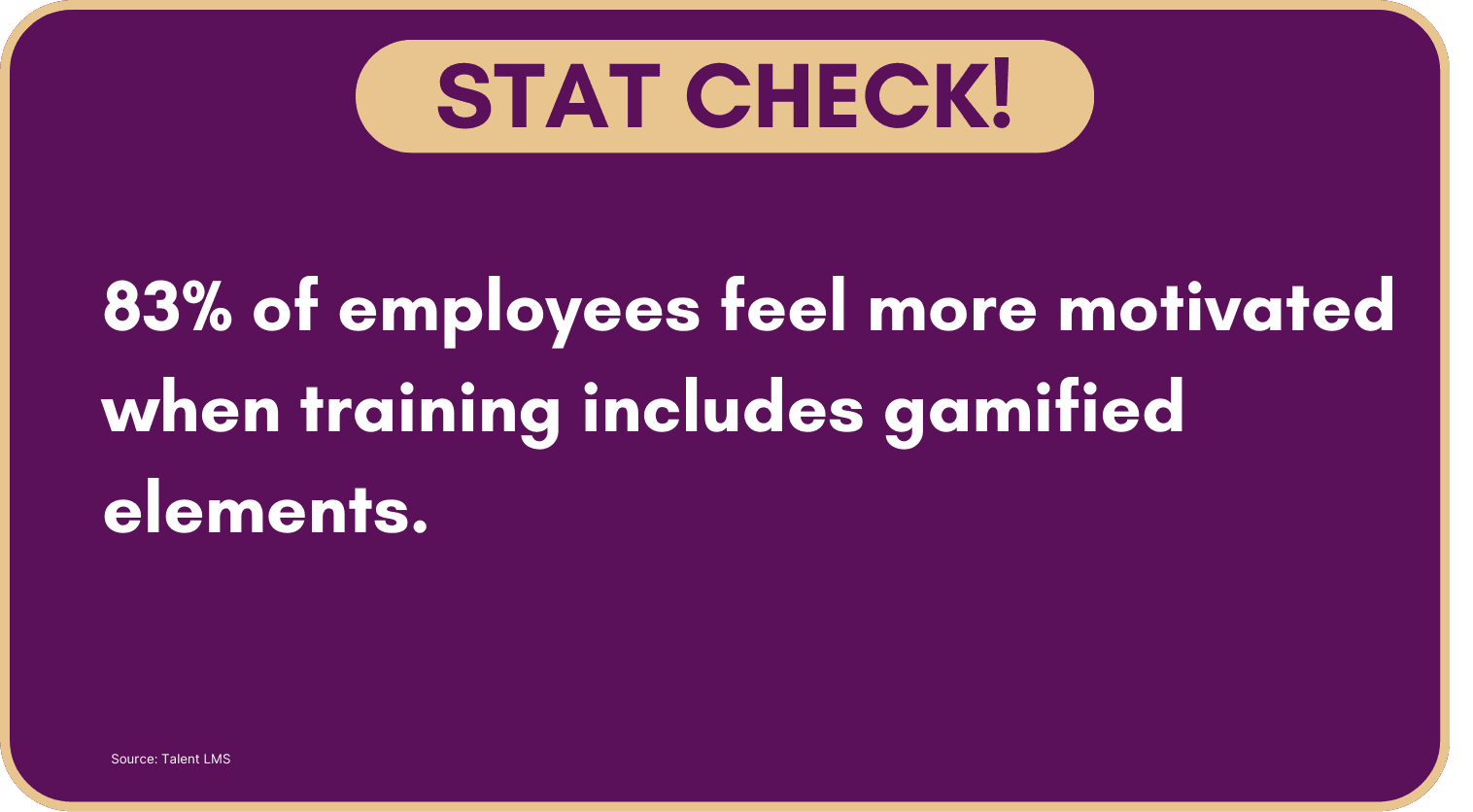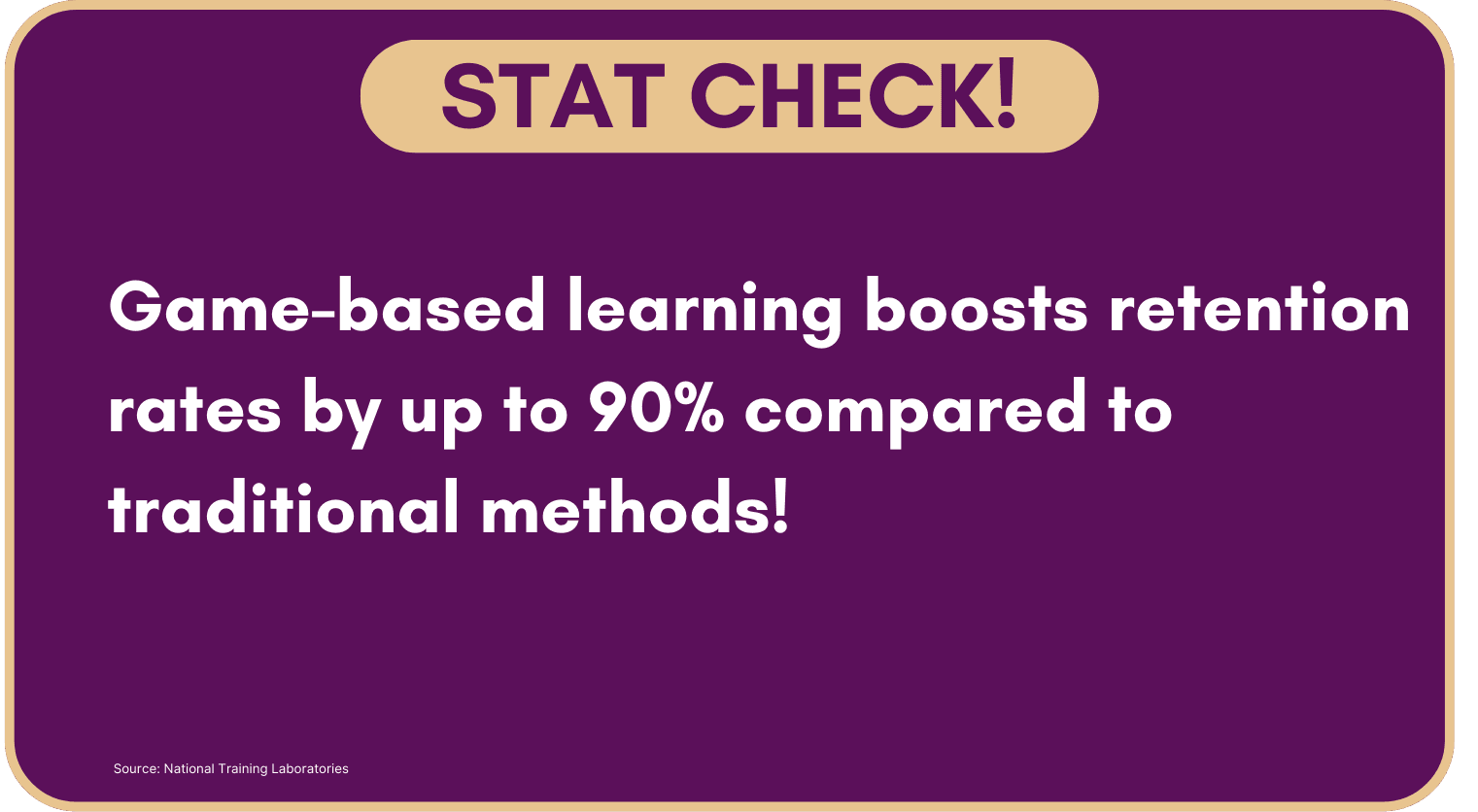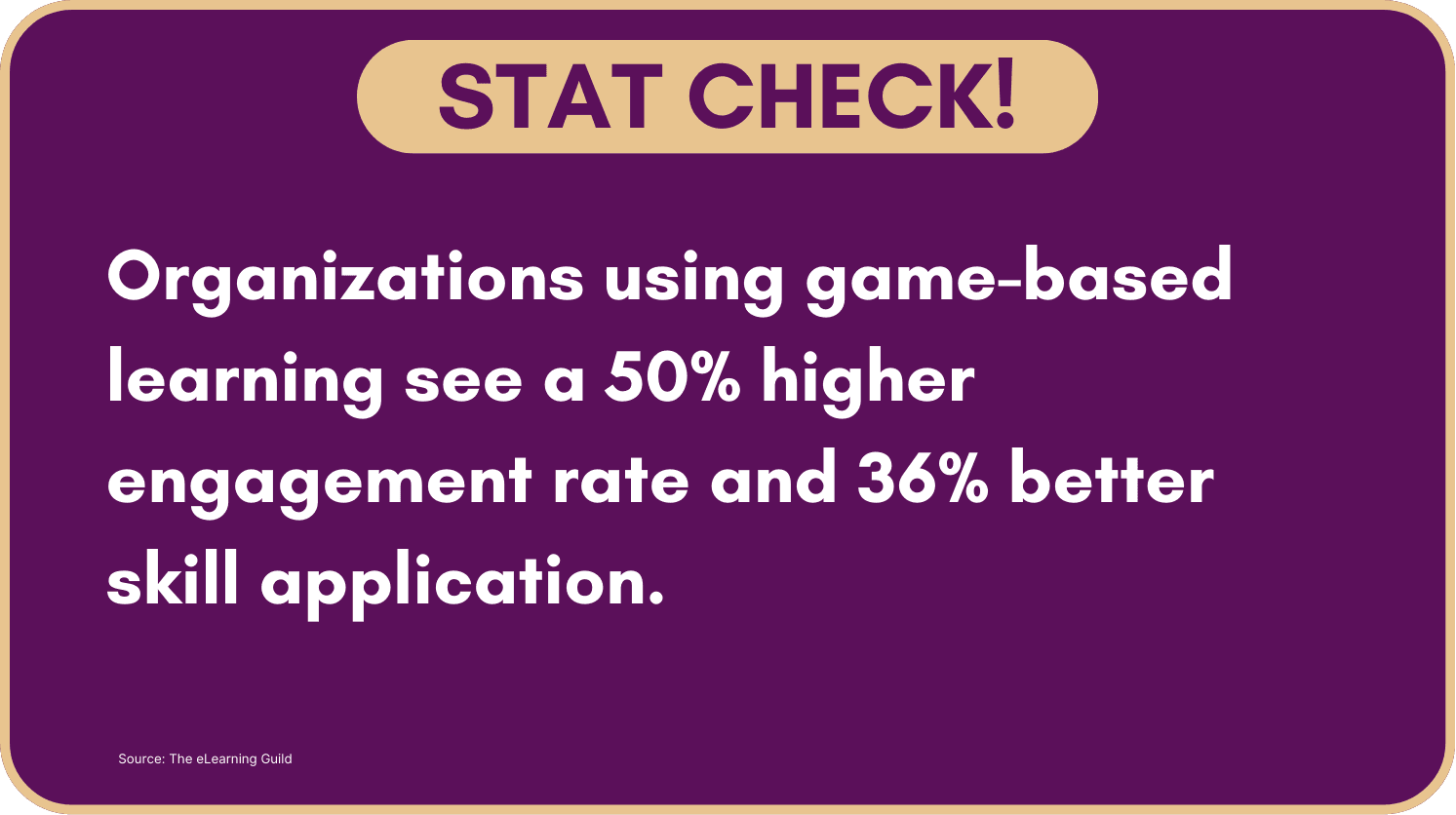The Engagement Crisis in Training: Why Learners Tune Out
Ever felt like a training session was just a glorified presentation? You’re not alone. Traditional training often struggles to keep learners engaged. Long presentations, information overload, and passive learning structures turn what should be an exciting growth opportunity into a test of endurance.
The problem? Human brains aren’t wired to absorb information through one-sided lectures alone. We thrive on interaction, challenge, and storytelling—things that conventional training rarely delivers. So, while facilitators talk, learners daydream, check their emails, or mentally plan their lunch orders.
And that’s a major issue. Because disengaged learners don’t retain knowledge, and knowledge that isn’t retained is knowledge that isn’t applied. Organizations end up wasting time, resources, and—let’s be honest—patience on training that simply doesn’t stick.
This is where game-based learning flips the script. By introducing play, challenge, and decision-making into training, facilitators transform passive learning into active participation. And when learners actively engage, they don’t just remember—they apply, adapt, and improve.
The Psychology of Play: Unlocking Intrinsic Motivation in Learning
What makes people willingly spend hours on strategy games, puzzles, or even escape rooms—but struggle to focus for a 30-minute training session? The secret lies in the psychology of play.

Games tap into fundamental human motivators:
- Autonomy – Players make choices, explore, and direct their own learning journey.
- Mastery – Every challenge presents an opportunity to grow and improve.
- Purpose – Games provide clear objectives, keeping participants focused and engaged.
- Social Connection – Multiplayer experiences encourage collaboration, discussion, and teamwork.
When these motivators are woven into training, the results are striking. Learners don’t just comply—they engage. They don’t just absorb—they apply. And most importantly, they enjoy the process.
Game-based learning isn’t about turning work into a playground. It’s about leveraging proven psychological triggers that keep people motivated and invested in their learning. If we can apply these same principles to corporate training, we’re no longer fighting for learners’ attention—we’re capturing it naturally.
Key Game Mechanics and Their Impact on Learning
Game-based learning isn’t just “let’s add some points and badges” (spoiler: that’s gamification, and it barely scratches the surface). True game-based learning incorporates mechanics that actively drive engagement and deepen understanding. Here’s how:
- Challenges & Goals – Every game gives players a purpose. Training should do the same. Setting clear, progressive objectives keeps learners focused and motivated.
- Feedback Loops – Immediate feedback allows learners to adapt in real time, reinforcing correct behaviors and helping them adjust mistakes before they become habits.
- Storytelling & Immersion – Humans connect with narratives. Training that integrates real-world scenarios and storytelling keeps learners emotionally invested.
- Collaboration & Competition – Whether working together or pushing for the top spot, these mechanics boost engagement and knowledge retention.
- Risk-Free Failure – Unlike real-world mistakes, failure in a game-based environment is just another step toward success. Learners gain confidence as they refine their strategies.
When combined, these elements create a training experience that learners don’t just tolerate—they actually enjoy. And when training is enjoyable, it’s effective.
Designing Game-Based Learning For Adults
Let’s be honest—adults don’t want to sit through anything that feels like school all over again. They want relevance, autonomy, and real-world application. The challenge? Most corporate training still treats learners like passive listeners rather than active participants.

Game-based learning solves this by tapping into how adults naturally learn: through experience, problem-solving, and self-direction. Here’s how to design training that clicks with grown-ups:
- Make It Relevant – Adults need to see the “why.” Tie game mechanics directly to workplace challenges, so learners immediately understand how the training benefits them.
- Give Learners Control – Choice matters. Allow learners to navigate scenarios, make decisions, and experience consequences—all within a structured yet flexible learning environment.
- Mirror the Real World – Training should feel like practice, not theory. Simulated business scenarios, branching storylines, and decision-based gameplay prepare learners for actual workplace situations.
- Keep It Clear & Simple – Nobody has time for convoluted rules. The best game-based learning experiences are intuitive, easy to pick up, and seamless to play.
The key is blending engagement with application. When learning feels like an interactive challenge rather than an information dump, retention skyrockets.
Beyond Gamification: Creating Truly Immersive and Transformative Experiences
Gamification (badges, leaderboards, and points) has its place, but let’s not mistake it for actual learning transformation. True game-based learning isn’t about dangling rewards—it’s about designing experiences where learning happens through action.
Here’s how to elevate training beyond surface-level gamification:
- Deep Narrative & Storytelling – Instead of static slides, immerse learners in story-driven scenarios where their choices influence outcomes.
- Adaptive Challenges – Instead of one-size-fits-all training, use dynamic difficulty that adjusts based on learner performance.
- Role-Playing & Scenario-Based Learning – Instead of generic case studies, put learners in decision-making roles where they navigate complex, real-world challenges.
- Emotional Engagement – Instead of passive observation, create experiences that evoke reactions, spark discussions, and drive behavioral change.
Gamification gets learners interested; game-based learning gets them invested.
Measuring the Impact: How Game-Based Learning Can Demonstrate ROI
It’s all fun and games—until someone asks about the ROI. Luckily, game-based learning isn’t just engaging; it’s measurable.

Key performance indicators that prove its impact include:
- Knowledge Retention Rates – Compare pre-and post-training assessments to see the difference in information retention.
- Engagement Metrics – Track completion rates, time spent in training, and participant interaction levels.
- Skill Application & Behavior Change – Evaluate how well employees apply learned skills in real-world situations.
- Employee Feedback & Satisfaction – If learners actively enjoy training, they’re more likely to embrace future development opportunities.
Data-driven insights don’t just justify training investments—they refine and improve learning experiences for long-term success.
Workplace training is evolving, and passive learning is officially outdated. Game-based learning isn’t just a trend—it’s the future. By incorporating immersive experiences, interactive storytelling, and real-world challenges, organizations can create training programs that learners actually want to engage with.
The question isn’t whether game-based learning works—it’s whether you’re ready to implement it. And if you are? The next step is simple: Reach out to us!

Glossary Defined
Your comprehensive guide to the Evivve ecosystem. Define key terms, from the AFERR model to Systems Thinking, to deepen your platform knowledge.


Single-Player Game
Your complete support resource. Access step-by-step guides, program templates, and technical documentation to optimize your facilitation workflow.


Official Newsroom
Explore Evivve’s official press releases, industry awards, and media features. A curated hub demonstrating our leadership and impact in the L&D space.


Leave A Reply
Your email address will not be published. Required fields are marked *